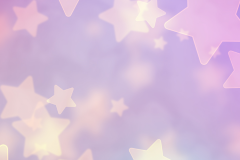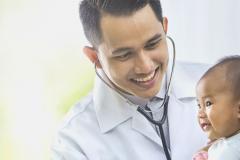- Overview
-
Pediatric Sports injuries: As more children and adolescents become active in sports, injuries relating to their involvement have become more common. Patellar instability and anterior cruciate ligament (ACL) injuries are commonly seen in this age group. My research in this area focuses on identifying injuries quickly and helping kids get back to their desired sports and activities.
Cerebral palsy and gait analysis: Cerebral palsy is a neuromuscular condition that affects gait (walking) and posture. Instrumented gait analysis allows us to accurately document how a child is walking and identify ways in which we can improve their mobility. My research in this area focuses on using instrumented gait analysis to assess the impact of orthopaedic surgical interventions in children with cerebral palsy.
- Publications
-
Healing Time and Complications in Operatively Treated Atypical Femur Fractures Associated With Bisphosphonate Use: A Multicenter Retrospective Cohort.
Bogdan Y and Tornetta P and Einhorn TA and Guy P and Leveille L and Robinson J and Bosse MJ and Haines N and Horwitz D and Jones C and Schemitsch E and Sagi C and Thomas B and Stahl D and Ricci W and Brady M and Sanders D and Kain M and Higgins TF and Collinge C
DOI: 10.1097/bot.0000000000000516
PubMed: 26709814
04/2016The Frequency of AVN Following Reconstructive Hip Surgery in Children With Cerebral Palsy: A Systematic Review.
Hesketh K and Leveille L and Mulpuri K
DOI: 10.1097/bpo.0000000000000485
PubMed: 26849636
03/2016Minimizing tourniquet pressure in pediatric anterior cruciate ligament reconstructive surgery: a blinded, prospective randomized controlled trial.
Reilly CW and McEwen JA and Leveille L and Perdios A and Mulpuri K
DOI: 10.1097/bpo.0b013e31819bcd14
PubMed: 19305279
2009Case report: action-induced focal dystonia in long distance runners.
Leveille LA and Clement DB
DOI: 10.1097/jsm.0b013e3181845f35
PubMed: 18806556
09/2008 - Research
-
Rebound Deformity After Growth Modulation
Growth modulation uses a small surgical implant to tether one side of the growth plate allowing us to harness the power of the growth for deformity correction. As popularity for this procedure has grown, it has been used in progressively younger patients. This results in deformity correction being achieved prior to skeletal maturity, requiring removal of the surgical impact to prevent over correction. Once the tether has been removed, growth resumes and there is potential for rebound deformity. Accurate timing of initial intervention with growth modulation and timing of implant removal is unclear. The purpose of this research is to determine the frequency and magnitude of rebound deformity after growth modulation.Frequency of Crouch Gait in Spastic Diplegic Patients With and Without History of Tendo Achilles Lengthening
Crouch gait is part of the natural history of gait pattern change over time in children with spastic diplegia. This has been attributed to changes in strength to mass ratio with the adolescent growth spurt, progressive lever arm dysfunction, and iatrogenic weakening of the soleus with tendo Achilles lengthening. The relative importance of each of these factors is uncertain. The purpose of this project is to determine the impact of orthopaedic surgical intervention on progression to crouch gait in children with spastic diplegia.Research Group MembersZoe Ng, Co-op Student
Maya Sato-Klemm, Research Coordinator
Savitha Singarajan, INSPIRE PROJECT TRAINEE
Melody Wu, Clinical Research Assistant
Alyssa Yoo, INSPIRE Trainee
Congratulations CIHR Fall 2024 Project Grant recipients
Congratulations to the investigators and their teams who were awarded funding through the Canadian Institutes of Health Research (CIHR) Fall 2024 Project Grant competition!






